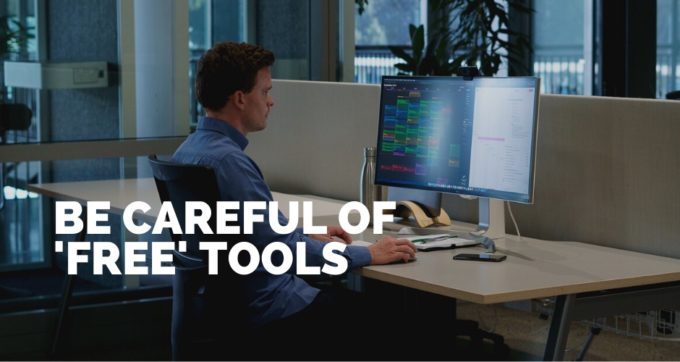It’s very common for tools and services to offer a ‘free’ tier or to give away their product entirely for free. As a customer, this sounds great, right? You can start using it for free and pay later if you need to unlock more features.
But I hear all the time from customers and clients who have been caught out after signing up for what they thought was a free tool, only to learn it’s not entirely free or they’re forced to pay later.
I’m not saying you shouldn’t use free tools. Only that there are a few things to consider when signing up for free tools and services.
Don't want to read this post? Listen to the podcast instead:
You are the product
Whenever a tool or service offers a free product this is usually because they’re generating revenue in other ways.
Google Analytics is offered for free to website owners. They do this to get on as many websites as they can so they can collect more data about what users are doing on the web so they can serve better ads to them in Google Search and on YouTube.
Unroll.me, an inbox cleaning service, is completely free for users because they sell the data to data intelligence companies like NielsenIQ.
You might be fine with this if you’re comfortable with your information being used in this way. But a lot of the time, users sign up for services like this without understanding the full story.
You get stuck with limited features
A common issue I hear from clients is they get signed up for a free service due to the attractiveness of the free plan only to find they are forced to pay later because the free version is too limited.
Tools and services usually charge for more powerful features. Or they may be limits on the volume you can the tool before you need to upgrade.
Hubspot is a good example of this. They offer their CRM product for free. Compared to something like Pipedrive where there is no free option, this sounds like a great deal. But users then end up paying more in the long run as they’re forced to upgrade based on the volume of contacts they have or emails they're sending. And because the time and cost of switching are often quite high, they put up with it.
Asana on the other hand has a free tier but doesn’t force you to upgrade. Sure you’ll have limited features but there are no caps on the number of projects or teams you can have so there won’t be any surprises later. A small business could use Asana for free for years with no issues. You would only need to upgrade based on the number of users in the account surpassing 15 (which seems fair to me).
The key takeaway here, read the fine print.
Less skin in the game
Another less obvious disadvantage of free tools is that when you sign up, there’s less skin in the game so you may not get as much out of it. Whereas if you pay for a tool, you’re incentivised to get the most out of it so you can get a better return from the money spent.
I’d heard about Keyboard Maestro many times in the past. But I never signed up because I didn’t know how to use it or how it would benefit me. It was only when David Sparks came out with his Keyboard Maestro field guide that I decided to sign up for the actual tool. I wanted to be sure that if I paid for the tool that I was going to be able to do a lot with it.
I’m approached fairly often by companies asking me to try their tool or service. I almost always say no, often because I don’t have a need for the tool. But also because I need to have skin in the game, otherwise I’m less likely to spend time learning how to get the most out of it.
Support the developers
And finally, another reason to avoid free services is to support the development of good quality products and services.
If every tool operated like Google Analytics or Unroll.me, we would live in a world run by data brokers who trade information. I would rather pay for a service knowing I’m supporting a more traditional business model that doesn’t depend on sacrificing privacy.
